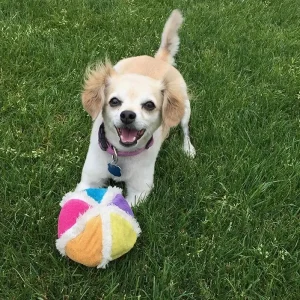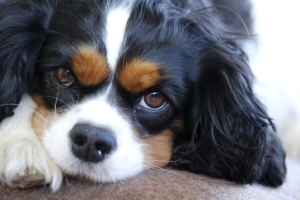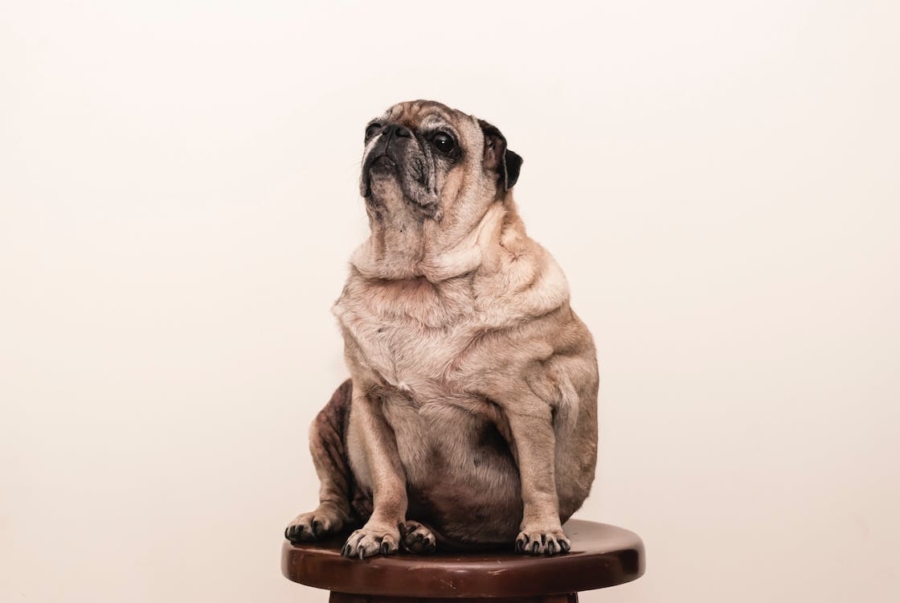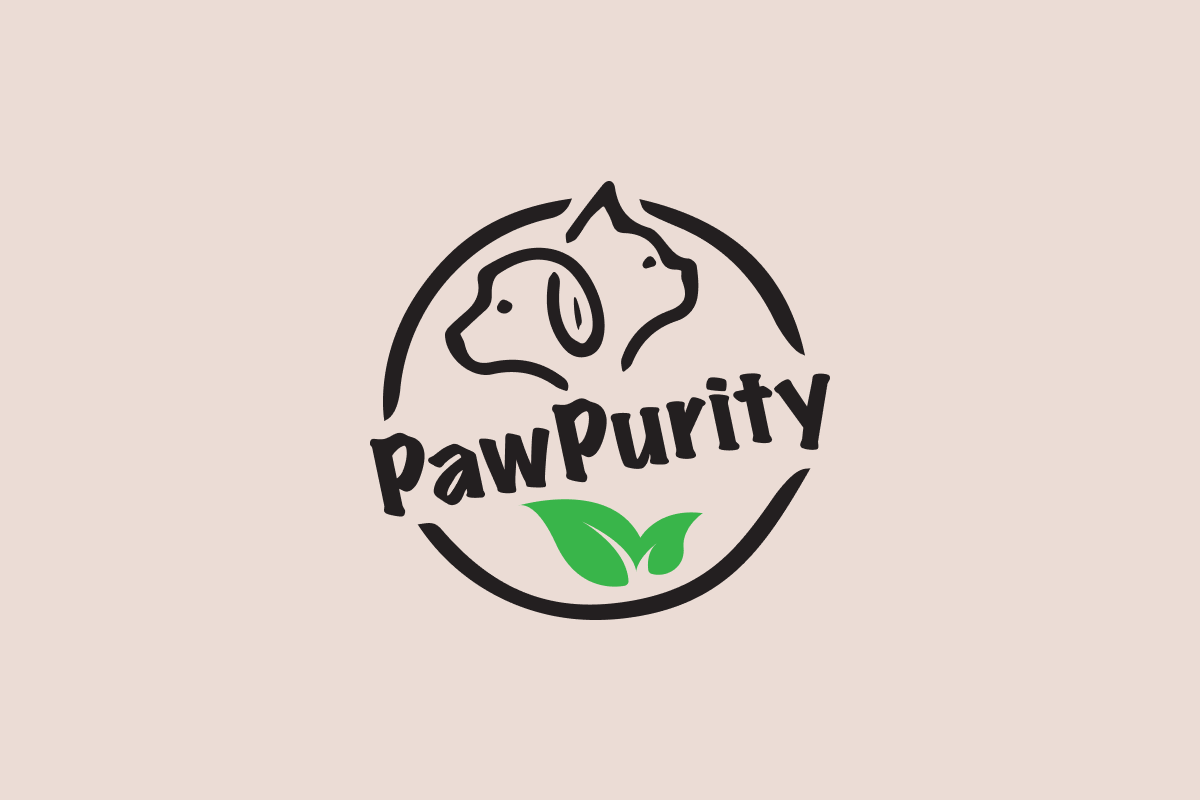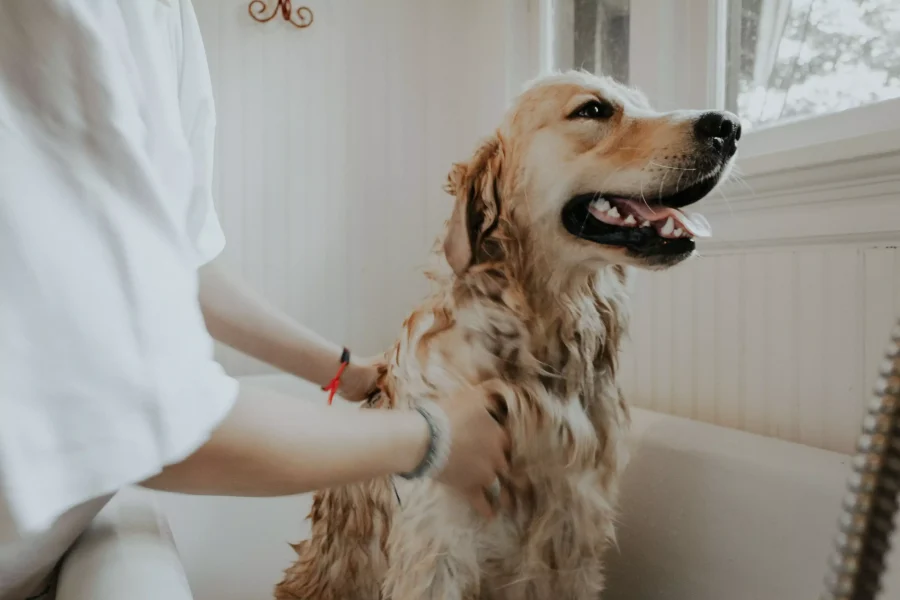Hot Spots on Pugs
In the whimsical world of pugs, where charm meets wrinkles, a fiery enigma burns beneath their furry façade: hot spots. These seemingly spontaneous patches of irritated skin have long puzzled both pet owners and veterinarians alike. With their lovable nature and endearing appearance, pugs have captured the hearts of many, including myself, but their propensity for developing hot spots has sparked curiosity and concern in the pug-loving community. Read on while we unravel the secrets behind why pugs are more prone to hot spots, delving into the intriguing connections between their unique physiology, playful behavior, and environmental factors. So let’s find out why do pugs tend to get hot spots.
Meet Little Guy – 19 Years Young
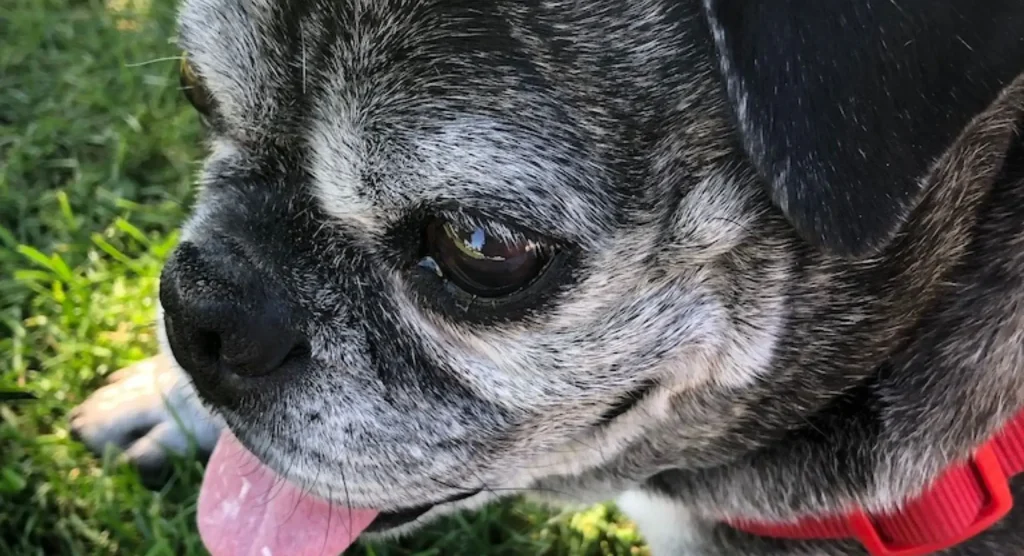
As the owner of the Boston Pug below (Little Guy), our PawPurity team understands the challenges owners face. Pugs may be predisposed to various skin issues, but with our attentive care and proactive approach, we can protect them from hot spots and keep their tails wagging. Little Guy is the prime example of a pug having such skin issues as hot spots. We hope you find the following information helpful.
The Anatomy of a Pug: Unmasking the Vulnerabilities
Pug Physiology
Delving into the distinctive physical features that make pugs adorable, we discover how these endearing qualities also contribute to their susceptibility to hot spots.
- Wrinkles and Folds: Pugs’ adorable wrinkles and folds, although a defining characteristic, can inadvertently create a breeding ground for trouble. These charming skin creases tend to trap moisture, making them susceptible to bacterial and fungal growth. The warm and moist environment within these wrinkles provides an ideal setting for microorganisms to flourish, leading to skin irritations and, eventually, hot spots. Therefore, diligent care and regular cleaning of the wrinkles are essential in preventing the onset of these fiery patches.
- Dense Fur: Pugs are blessed with a thick, luxurious coat that adds to their charm. However, this dense fur can create an environment conducive to the development of hot spots. The fur acts as an insulator, trapping heat close to the skin and impeding proper air circulation. Consequently, the skin beneath the fur can become warm and humid, promoting the growth of bacteria and exacerbating the risk of hot spots. Regular grooming practices, such as brushing and removing loose hair, can help alleviate this issue by improving airflow and reducing the likelihood of hot spots.

- Short Muzzles: Pugs possess a brachycephalic, or short-muzzled, structure that adds to their unique appearance but can pose challenges in regulating body temperature. The shorter nasal passages and compressed airways in pugs make it more difficult for them to cool down efficiently through panting, a primary method of heat dissipation in dogs. This compromised thermoregulatory ability puts pugs at a higher risk of overheating, which can contribute to the development of hot spots. It is crucial to ensure that pugs have access to cool, well-ventilated spaces and are not exposed to excessive heat, particularly during hot weather or vigorous exercise.
Understanding the vulnerabilities within a pug’s physiology allows us to comprehend why they are predisposed to hot spots. With proper care and attention to their unique physiological characteristics, we can help minimize the occurrence of hot spots on our furbabies.
Pug Hot Spots – Preventive Measures and Treatment Options
If hot spots develop, try changing shampoos. More often than not, shampoos can be the culprit. Many pugs need a hypoallergenic shampoo. If that doesn’t work, a visit to the veterinarian may be necessary. The vet may recommend one or more of the following interventions:
Shampoos & Medications for Pugs with Hot Spots
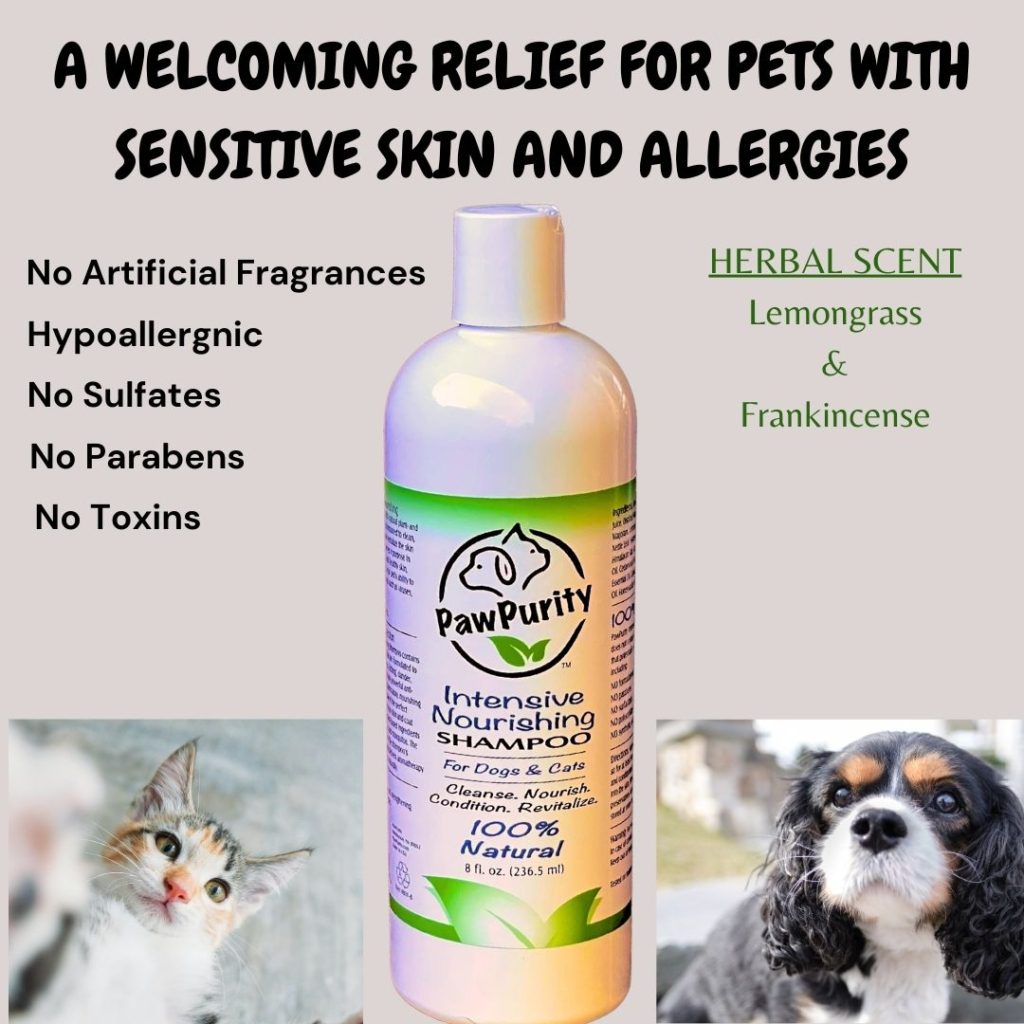
- Intensive Nourishing Shampoo is recommended by veterinarians and animal dermatologists for those that prefer natural over chemically-made medicated shampoos.
- Thorough cleaning and shaving of the affected area to remove hair and debris, allowing the skin to breathe and heal.
- Topical medications, such as antimicrobial or anti-inflammatory creams, alleviate itching, reduce inflammation, and combat infection.
- Oral medications, including antibiotics or corticosteroids to address underlying bacterial infections and control inflammation.
- In severe cases, your veterinarian may recommend additional diagnostic tests or procedures to identify underlying causes or contributing factors.
Grooming Routine
Regular grooming practices play a crucial role in preventing hot spots in pugs. Please pay special attention to cleaning and drying their adorable folds and wrinkles, as these areas are prone to moisture accumulation. Use gentle, pet-safe cleansers recommended by veterinarians to maintain skin hygiene. Additionally, establish a bathing routine suitable for your pug’s specific needs. Ensure appropriate Pet Shampoo and conditioners are used to keep your pug’s skin oil balance in check.
Living Environment
Creating a comfortable and well-ventilated living environment for pugs can significantly reduce the risk of hot spots. Consider the following strategies:
- Ensure proper air circulation in your home, particularly in areas where your pug spends a significant amount of time. Use fans or air conditioning to maintain a cool and dry environment.
- Provide cool and comfortable bedding options for your pug, using materials that allow air circulation and don’t retain moisture.
- Avoid exposing your pug to extreme temperatures or prolonged periods of heat. Limit outdoor activities during hot weather and provide shaded areas for relaxation.
- Keep indoor spaces clean and free from allergens, dust, and molds. Regularly vacuum carpets and upholstery, and consider using air purifiers to improve air quality.
The Culprits Within – Environmental Factors
Understanding the impact of environmental factors on pugs’ skin health is vital in mitigating the development of hot spots. By minimising exposure to allergens, managing indoor environments, and preventing overheating, we can create a safer and more comfortable environment for our pugs.
Allergies in the Air
Investigating the impact of common allergens in the environment on pugs’ skin health and the development of hot spots.
Pollen, Dust, and Mold: Pugs, like humans, can be sensitive to airborne allergens such as pollen, dust, and molds. These allergens can trigger allergic reactions in pugs, leading to incessant itching and scratching. When pugs scratch vigorously, they can break the skin’s protective barrier, making it more susceptible to bacterial invasion and hot spot formation. The constant exposure to allergens, especially during peak seasons, can exacerbate skin irritations and increase the likelihood of hot spots. Managing pugs’ exposure to these allergens, such as keeping indoor environments clean, using air purifiers, and avoiding outdoor areas with high pollen levels, can help reduce the risk of allergic reactions and subsequent hot spots.
Sensitivity to Temperature: Pugs’ compromised thermoregulatory abilities can make them more susceptible to overheating, which, in turn, can exacerbate hot spot development. Due to their brachycephalic (short-muzzled) structure, pugs have difficulty dissipating heat effectively through panting. As a result, they are more prone to heat exhaustion and heat stroke. Prolonged exposure to high temperatures or humid environments can lead to increased sweating and moisture retention in their skin folds, creating an ideal environment for bacterial growth and the development of hot spots. It is crucial to provide pugs with ample shade, fresh water, and controlled environments to prevent overheating and reduce the risk of hot spots associated with elevated body temperature.
Curious Pug Habits
Itching for Trouble: Pugs’ Peculiar Behaviors
Shedding light on the adorable idiosyncrasies that pugs exhibit, we uncover how these habits may inadvertently contribute to the development of hot spots.
Persistent Scratching and Chewing: Pugs are known for their propensity to scratch and chew on their skin. While these behaviours may seem harmless or merely a response to occasional itchiness, they can have detrimental effects on their skin health. Persistent scratching and chewing can damage the skin’s protective barrier, creating small abrasions or openings that provide an entry point for bacteria. The introduction of bacteria to the compromised skin can trigger inflammation and infection, ultimately leading to the formation of hot spots. Pet owners should carefully monitor their pugs’ scratching and chewing habits, addressing any underlying causes of discomfort and taking steps to prevent excessive self-inflicted trauma.

Playful Pug Prowess: Pugs are playful and energetic companions, always ready for a game or an adventure. However, their exuberant playfulness can sometimes lead to accidental injuries that contribute to the development of hot spots. During vigorous play, pugs may inadvertently bump into objects, scrape against rough surfaces, or engage in rough-and-tumble activities with other pets. These incidents can cause minor cuts, abrasions, or skin trauma, creating an opportunity for bacteria to invade the skin and initiate the inflammatory response that characterises hot spots. It is important to ensure a safe play environment for pugs, minimising the risk of accidental injuries and promptly addressing any wounds or skin irritations that may arise.
We hope this blog has helped you understand why pugs get hot spots and other information that you will find helpful as a pug owner. If so, please share with other pug owners. Thank you for reading.
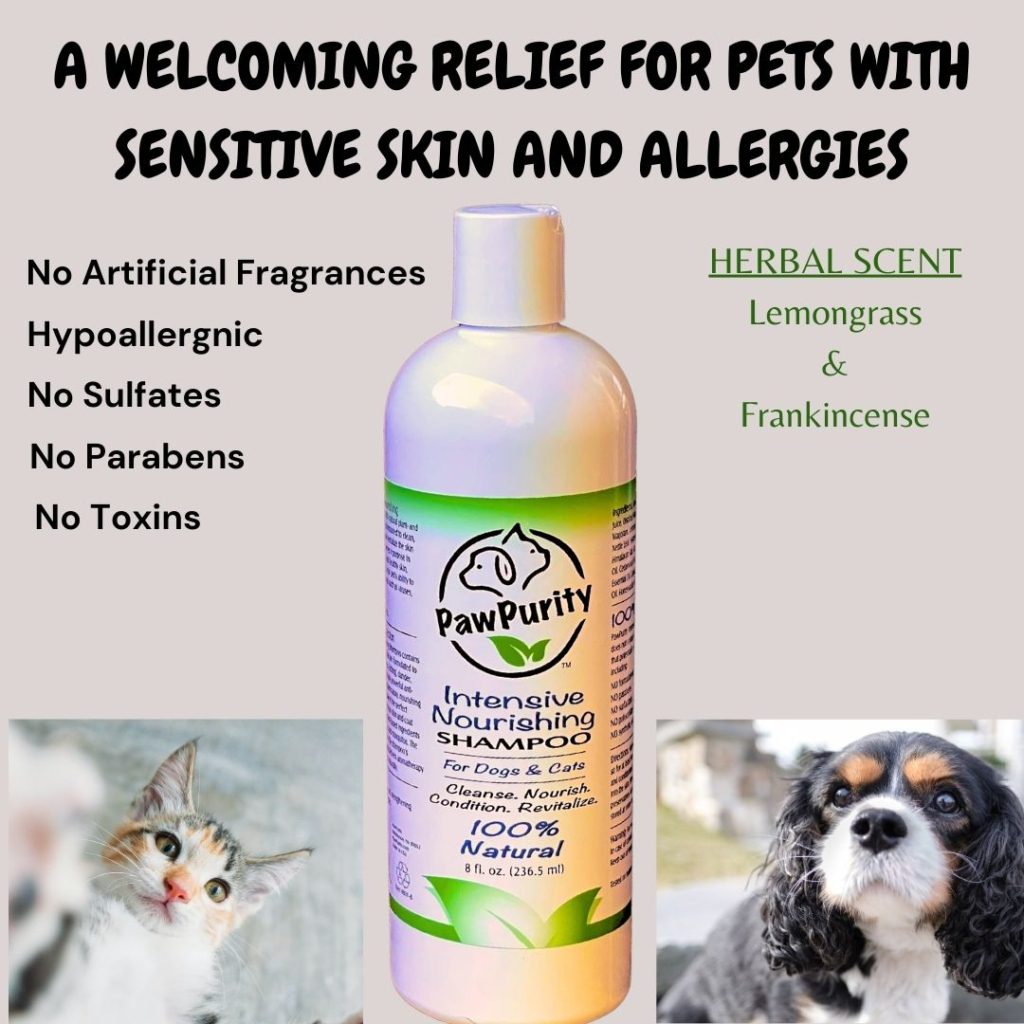
Intensive Nourishing Shampoo – Yucca + Nettle + Aloe + Colloidal Silver
PawPurity Intensive Nourishing Shampoo is a powerful 100% natural plant- and mineral-based cleanser. It contains the purest form of 26 organically grown plants formulated to clean, nourish, condition, balance oil production, and revitalize your pet’s skin and coat. Because this shampoo does not contain sulfates, it does not make suds, but instead lathers. You only need a MODEST amount.
PREVENTS & REDUCES: Formulated with ingredients that balance the skin and coat oils which may be stripped away with chemical-based synthetic shampoos. Natural ingredients are carefully selected to nourish the skin and minimize itching, dryness, dryness, inflammation, dander, topical allergies, hot spots and other problematic skin and coat issues.
SHEDDING: Helps lessen shedding by strengthening the hair and fur and expanding the growing stage within the follicles.
RECOMMENDATIONS: Recommended by veterinarians including animal dermatologists. Used by groomers, dog and cat owners and dog show competitors.
HEALTH BENEFITS: Its many powerful anti-bacterial, anti-fungal, and anti-inflammatory, nourishing, and conditioning agents are effective on all skin types, even those with excessive sensitivities and allergies.
ACTIVE PROPERTIES: Each ingredient serves a purpose in maximizing your pet’s ability to resist unwanted invading organisms that may live on or enter through the skin and coat. There are 21 conditioners & hair/fur strengtheners; 17 antibacterials & antiseptics; 12 dander inhibitors; 11 antifungals; 10 repellents; 7 anti-inflammatories
INGREDIENTS: Olive Oil-Based Cleanser. Argan Oil. Calendula. Mullein Extract. Aloe Vera Oil. Rosemary Extract. Yucca. Lavender. Colloidal Silver. Vitamin E. Lemon Balm Hydrosol. Comfrey. Ginger. Vegetable Glycerin. Distilled Water. Apple Cider Vinegar. Witch Hazel. Horsetail. Red Clover. Nettle. Salt. Essential Oils: Frankincense, Lemongrass, Sweet Marjoram
DIRECTIONS: Apply a MODEST AMOUNT on a wet coat. Lather and allow to sit for as long as your pet will allow (3-5 minutes), giving the nourishing and conditioning ingredients time to penetrate the skin. Rinse. Remember, this shampoo does not suds, but lathers. It does not have the typical detergents (sulfates) that cause an oil imbalance that results in dryness and itching.
PRACTICES & STORAGE: Tested on humans first before testing on the PawPurity team’s pets. We use food grade and natural preservatives only. Keep the container sealed and stored at room temperature.
BRAND: PawPurity® products are made and packaged in the USA. We are a company that uses 100% natural ingredients only. We don’t use synthetics, artificial fragrances, pesticides, dyes, formaldehyde, or other potentially dangerous preservatives, toxins, parabens, sulfates, DEA, SLS/SLES.
WARNING: This product contains plants, nuts, seeds and their by-products. For external use only. Do not ingest. Keep out of reach of children.
#HotspotsOnPugs #Pugs #Hotspots #PugDogs

